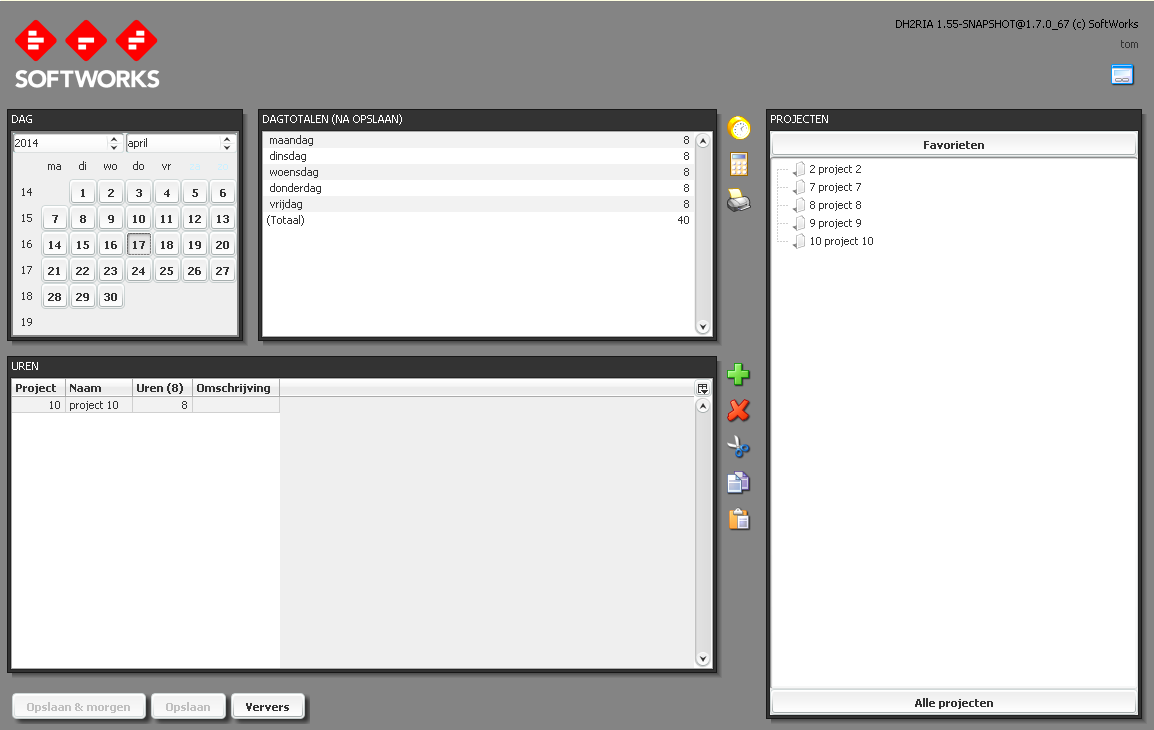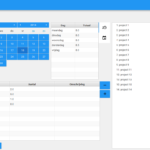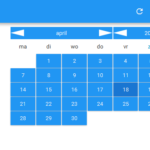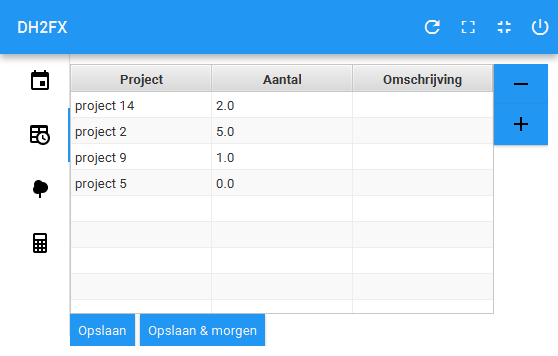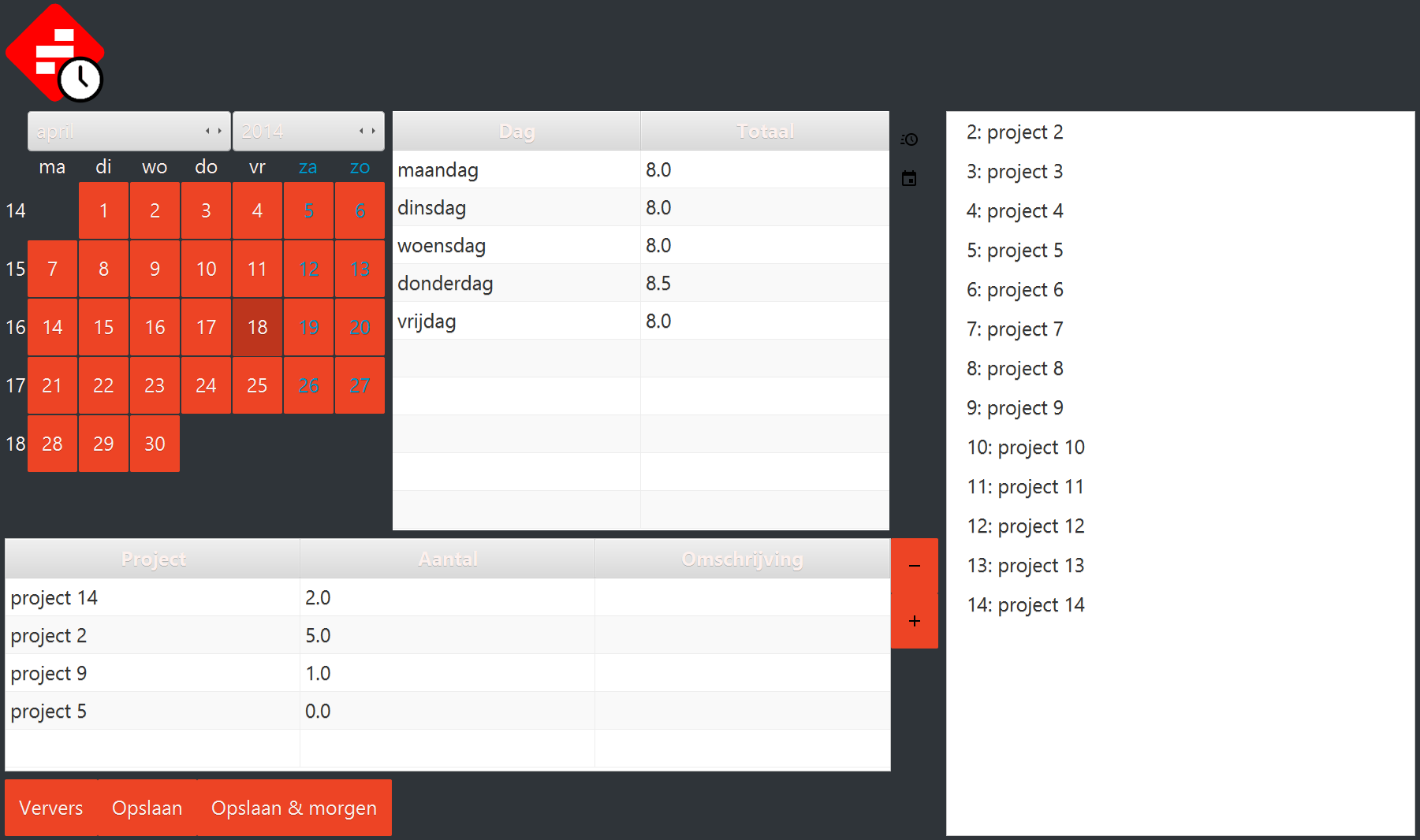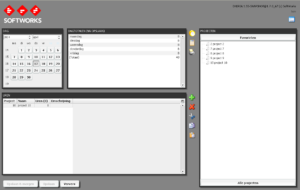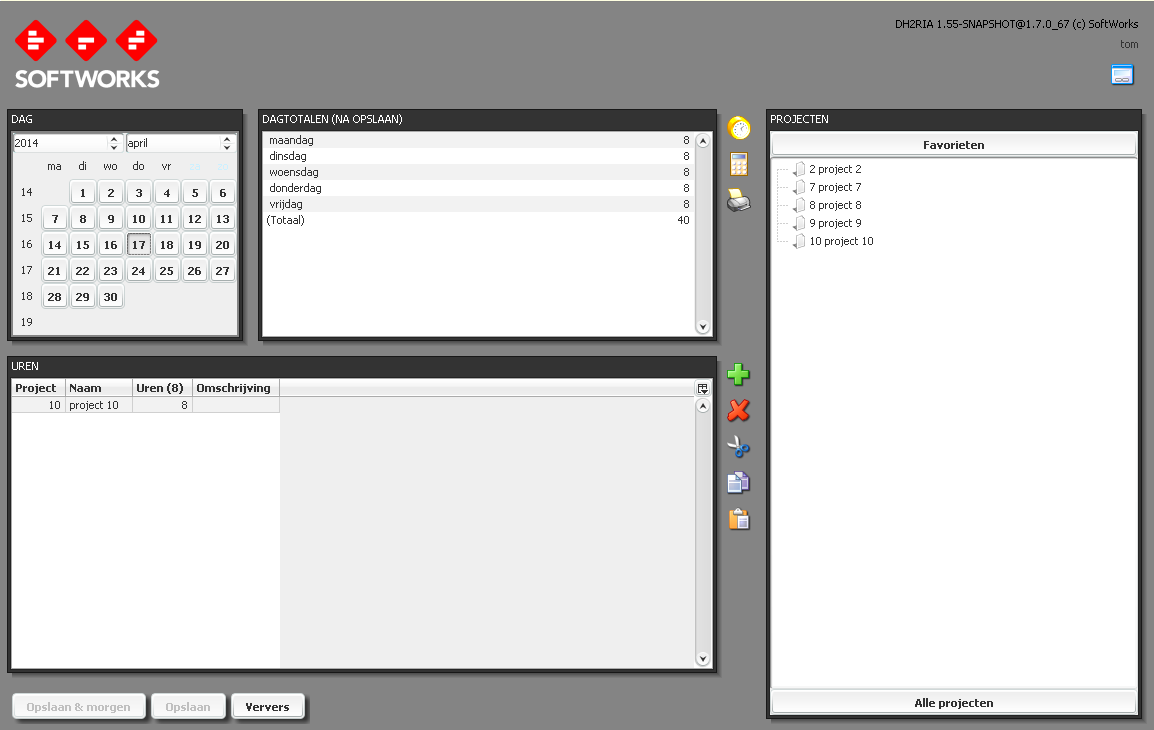Is it a screen or control?
The common thread running through my hobby software activities lately, is the porting of my hour registration applet to a JavaFX desktop, mobile and web version. Yesterday I picked up work on the favorites; those projects who are currently most used.
In the original applet the favorites (as seen on the right in the image above) are implemented as a list and share the same screen space as the full tree of projects. Switching between either is done using an accordion; a layout similar to a tabbed pane, showing a header and per header a content. The content of one tab is shown at a time, and switching is done by clicking on the tab header. The main difference is that the headers are intermixed with the content, and move up or down when other content is revealed. Not unlike an accordion has ridges that move apart to show the space in between. I wanted to have the same visualisation in the JavaFX version, I could have settled on a tabbed pane, but what is the fun in that?
Now, JavaFX 8 already has an accordion control, but it behaves differently from what I want. In my usage there is only one tab visible, while the default accordion can (un)fold multiple tabs, and even have them all closed. It’s a minor UI/UX difference, but not what I want, so I decided to write it my version.

